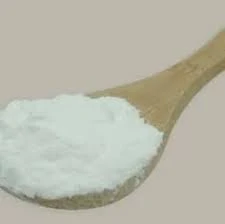The Toxicity of Ammonium Thiocyanate
Ammonium thiocyanate (NH4SCN) is a chemical compound commonly used in various industrial applications, including agriculture, pharmaceuticals, and chemical synthesis. While it serves several beneficial purposes, understanding its toxicity is vital for ensuring safe handling, usage, and environmental protection.
Chemical Properties and Uses
Ammonium thiocyanate is a white, crystalline solid that is highly soluble in water. It is the salt formed from ammonia and thiocyanic acid. In agriculture, ammonium thiocyanate is primarily utilized as an herbicide and fertilizer, as it provides a source of nitrogen, which is essential for plant growth. Apart from agricultural uses, it also serves in the synthesis of thiocyanate salts and can function as a catalyst in certain chemical reactions. Its properties make it appealing for various applications, but improper use can lead to significant health and environmental risks.
Toxicity Overview
The toxicity of ammonium thiocyanate stems from its ability to release thiocyanate ions in biological systems. When ingested or absorbed in significant amounts, these ions can interfere with multiple physiological functions. The primary concerns regarding its toxicity include respiratory issues, effects on the nervous system, and reproductive health implications.
1. Inhalation and Exposure Inhalation of ammonium thiocyanate dust or vapors can lead to respiratory irritation, resulting in symptoms such as coughing, wheezing, and difficulty in breathing. Prolonged exposure may cause more severe respiratory diseases, particularly in workers who handle this compound without proper protective measures.
2. Ingestion If ammonium thiocyanate is ingested, it can be extremely dangerous. Toxic doses can lead to nausea, vomiting, abdominal pain, and in severe cases, it may result in acute poisoning symptoms. Symptoms of acute poisoning include disorientation, headaches, weakness, and convulsions. In extreme cases, it may pose a risk of coma or death.
3. Effects on the Nervous System The neurotoxic effects of thiocyanate ions are an area of considerable concern. Chronic exposure has been linked to central nervous system disorders, which may manifest as headaches, mental fatigue, and even mood disturbances. This is particularly concerning for agricultural workers or individuals who may be exposed to this compound regularly.
ammonium thiocyanate toxicity

4. Reproductive Toxicity Research suggests that exposure to ammonium thiocyanate can have adverse effects on reproductive health. Animal studies have indicated that prolonged exposure may influence fetal development and potentially lead to birth defects. Although comprehensive studies on human reproductive toxicity are limited, the implications in animal models warrant precautionary measures for pregnant individuals.
Environmental Impact
Beyond human health, ammonium thiocyanate poses risks to the environment. When released into soil or water systems, it can contribute to soil and water pollution. Thiocyanate is known to be toxic to aquatic life, including fish and other organisms that depend on clean water for survival. This highlights the importance of proper handling, disposal, and potential regulations governing its use in industrial and agricultural applications.
Safety Measures
To mitigate the risks associated with ammonium thiocyanate, safety measures must be implemented in workplaces where it is used. These can include
- Personal Protective Equipment (PPE) Workers should wear appropriate PPE, including gloves, masks, and protective clothing to minimize exposure. - Ventilation Ensuring adequate ventilation in areas where ammonium thiocyanate is handled can help decrease inhalation risks. - Training and Awareness Educating workers about the potential hazards and safe handling techniques is crucial for preventing accidents and exposures.
Conclusion
While ammonium thiocyanate serves several beneficial functions across various industries, its toxicity must not be overlooked. Understanding the potential risks associated with its use can lead to better safety practices, regulatory measures, and awareness programs. As research progresses, ongoing assessments of its impact on human health and the environment will be pivotal in ensuring safe usage and minimizing its harmful effects. Responsible management and adherence to safety protocols can help balance its utility with the imperative to protect human health and the environment.

